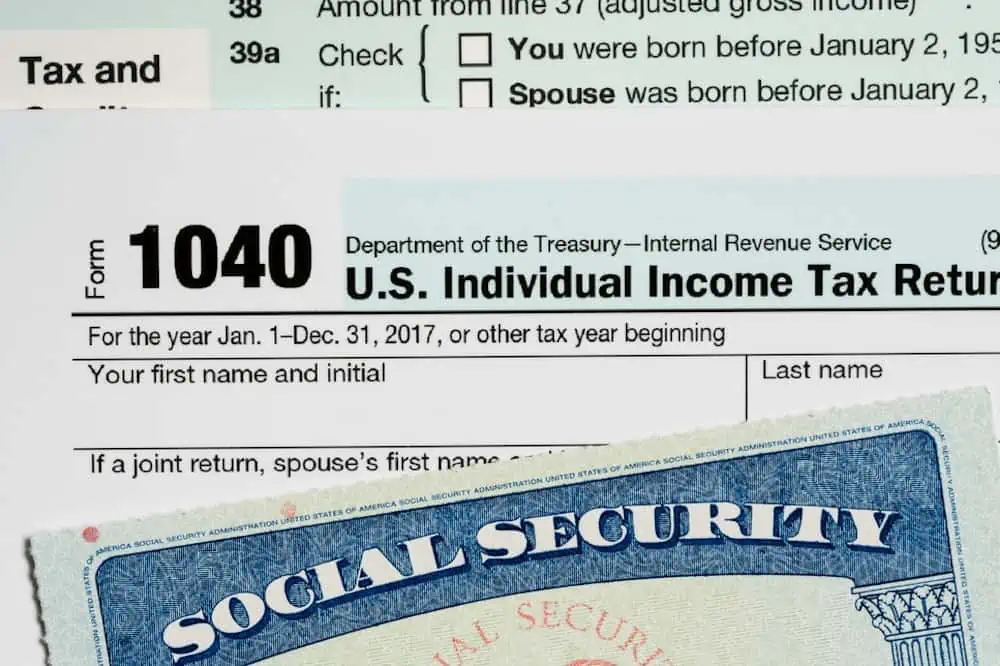Social Security spousal benefits can be extremely beneficial for people who either don’t qualify for Social Security by themselves or qualify for a significantly lower amount than their current or former spouse. However, not everyone who qualifies for these benefits makes the most of them.
Social Security is an important source of retirement income for millions of Americans. As of August 2024, a little more than 68 million Americans were receiving monthly Social Security benefits of some sort. That number includes more than 58 million retired or disabled workers—and nearly 2 million of their spouses.
If you’re in that latter number, or expect to be, read on as I discuss some general rules for maximizing Social Security spousal benefits. Some of these strategies apply to everyone, while others are more edge cases. I’ll also talk about some loopholes people used to use that have now been eliminated.
My hope is that you’re able to create a plan that will get you the highest benefit amount possible.
Featured Financial Products
Table of Contents
Choose the Best Age to Start Collecting

Timing is key when it comes to getting one’s maximum Social Security benefits. If you start benefits at the right age, you can receive the maximum spousal benefit, which is 50% of your spouse’s benefit level if they retire at their full retirement age.
The best age to start collecting Social Security spousal benefits depends primarily on the year you were born.
Before Full Retirement Age

The minimum age to start collecting “Old-Age” (retirement) Social Security spousal benefits is 62 years old. But, often, it’s better to wait until one’s full retirement age. That’s because if you collect before full retirement age (FRA), your benefit is permanently reduced.
If you retire before full retirement age:
— Your benefit is reduced by 25/36ths of 1% for every month before FRA, up to 36 months.
— Your benefit is reduced by 5/12ths of 1% for every additional month after 36 months
Let’s try a hypothetical example.
Your spouse is eligible to receive $2,000 in Social Security retirement benefits when they reach FRA.
Your maximum Social Security spousal benefit would be $1,000, but you decide to start collecting your benefit 12 months early.
Your benefit amount would then be 45.84% of your spouse’s primary insurance amount, rather than 50%. That means instead of $1,000 per month, you would receive $916.80 per month—a permanently reduced rate that only adjusts for annual cost of living adjustments (COLAs). So instead of making $12,000 per year, you would make $11,001.60 per year, meaning you’re missing out on nearly $1,000 per year for the rest of your life.
Of course, you would be collecting your benefit for one less year.
Your “breakeven” point in this scenario would be living about 11 more years from the time you start collecting. Let’s say you’re a 66-year-old female. According to actuaries from the Social Security Administration, you’re estimated to live for roughly 19 more years. If that estimate is accurate for you, you would make more money overall by waiting until your full retirement age to start collecting your benefit.
You know your health better than I do, however. If you have serious health issues that significantly lower your life expectancy, that could justify starting your Social Security spousal benefit payments earlier. Or, you might be in a dire financial situation and need to start taking payments at a younger age to stay afloat.
People affected by the Government Pension Offset may also want to start receiving payments before full retirement age.
Related: How Much Should I Save Each Month?
Government Pension Offset (GPO)

The Government Pension Offset (GPO) reduces the Social Security spousal or widower benefits of most workers who also get a pension based on local, state, or federal government employment that isn’t covered by Social Security. The spousal benefit reduction is an amount equal to two-thirds of the noncovered government pension.
For example, if a person received a monthly noncovered pension of $1,200, two-thirds ($800) would be deducted from that individual’s Social Security spousal benefit. If your monthly spousal benefit would normally be $1,000, then you would instead receive $200 ($1,000 – $800 = $200) per month from Social Security. (And yes, if the reduction amount is greater than your monthly Social Security benefit, you might not receive a benefit.)
According to the Congressional Research Service, as of December 2023, about 1% of all beneficiaries’ benefits were reduced by the GPO, and roughly half of those (51%) were spouses.
You can estimate the most your benefit could decrease here.
Some people can receive more overall Social Security money by claiming spousal benefits before reaching full retirement age than claiming their own benefits because they may lose benefits later.
Related: Don’t Believe These 17 Social Security Myths
Featured Financial Products
At Full Retirement Age

Usually, waiting until one’s full retirement age is the best option. At that point, you can receive your maximum spousal benefit amount (50% of your spouse’s benefit). Your normal retirement age depends on the year you were born.
The current brackets for one’s normal retirement age are as follows:
— Born between 1943 to 1954: 66
— Born in 1955: 66 and 2 months
— Born in 1956: 66 and 4 months
— Born in 1957: 66 and 6 months
— Born in 1958: 66 and 8 months
— Born in 1959: 66 and 10 months
— Born 1960 or later: 67
(Editor’s Note: If your birthday falls on the first of a month, your benefit and FRA are determined as if you were born in the previous month. Example: If you’re born on March 1, your benefit and FRA would be calculated as if you were born in February.)
Keep in mind that your spousal benefit doesn’t increase if your spouse postpones collecting their retirement benefit beyond full retirement age.
Related: 15 Alarming Gen X Retirement Statistics
Past Full Retirement Age

Workers who collect solely their own Social Security retirement benefits can receive a larger payment if they work past their full retirement age. The benefit increases by a set percentage each month benefits are delayed, and the benefit increase maxes out at age 70.
However, for spousal Social Security benefits, the amount does not increase if you wait until past your full retirement age.
As the rate doesn’t increase past your normal retirement age, there is no advantage to delaying payments longer.
Related: Retired But Too Young for Medicare? Health Insurance for Early Retirees
Featured Financial Products
The Bipartisan Budget Act of 2015 [Closed Loopholes]

The Bipartisan Budget Act of 2015 made two big changes to Social Security laws about filing for retirement and spousal benefits, closing two loopholes that took advantage of delayed retirement credits.
“Deemed Filing”

Previously, there was a loophole that allowed people to earn more through Social Security. When it was still an option, some spouses chose to receive spousal benefits at full retirement age; however, they delayed filing for their own retirement benefit, which allowed those benefits (which were based on their own earnings record) to increase thanks to delayed retirement credits.
“Deemed filing” closed that loophole (though it had grandfathered in people who were close to Social Security claiming age). With deemed filing, workers who are eligible for both retirement and spousal benefits must file for both when they first want to receive benefits. People may no longer separately claim these benefits.
Importantly: Deemed filing doesn’t apply to survivor benefits. Surviving spouses can begin their survivor benefit independently of their retirement benefit. Deemed filing also isn’t applicable to people who are receiving spousal benefits and are entitled to disability, as well as people who are receiving spousal benefits because they care for the retired worker’s child.
Related: When Should You File for Social Security?
“File and Suspend”

Previously, a worker who reached full retirement age might have chosen to apply for Social Security retirement benefits, then voluntarily suspended their payments. Why? This would allow their spouse to receive a spousal benefit even though the worker wasn’t collecting payments. During the suspension, the worker’s benefit amount would increase each month (with a cap at age 70) until they decided to resume receiving their payments.
The Bipartisan Budget Act of 2015 closed this “file and suspend” loophole. Nowadays, people are still welcome to voluntarily suspend benefit payments at full retirement age to earn higher benefits. However, during a voluntary suspension, spousal benefits are also suspended—and if your benefits are suspended, you can’t keep receiving spousal benefits on another person’s record. (Exceptions to this include a work-around for divorced spouses, who may keep receiving a divorced spousal benefit even if their ex-spouse suspends their retirement benefit.)
Related: Should I Pay Off My Mortgage Before I Retire?
Divorced Spousal Benefits

Spousal benefits aren’t limited to current spouses. If you were previously married to someone whose benefit is more than twice your own, it can be more strategic to collect ex-spousal benefits than your own (you can get whichever is higher, but not both).
To be eligible to receive ex-spousal benefits, you must be at least 62 years old, and you must have been married to your ex-spouse for at least 10 years. If you remarried, you cannot collect from your former spouse’s record unless the more recent marriage ended by annulment, death, or divorce. It doesn’t matter if your former spouse gets married again—both you and their current spouse may draw from your former spouse’s record.
Assuming you wait until your full retirement age, your benefit would be 50% of your former spouse’s full retirement amount or disability benefit.
Related: Do I Need a Financial Advisor? 7 Questions to Ask Yourself
Featured Financial Products
Related: 11 Ways To Avoid Paying Taxes on Your Social Security

If you’re looking to minimize the tax bite taken out of your Social Security benefits in retirement, you’ve got several available actions to reduce how much you pay each year. We outline several ways to avoid paying taxes on your Social Security benefits.
Related: How Are Social Security Benefits Taxed?

In many cases, Social Security benefits are subject to federal taxation. To learn how your Social Security benefits are taxed, we’ve got an entire guide to walk you through the calculation.
Related: 10 States That Tax Social Security Benefits

While most states don’t subject Social Security benefits to taxation, at least 10 states do tax Social Security. To see if you live in one of them, or you’re considering a relocation for retirement and taxation of your Social Security is a sticking point, we’ve got you covered with all of the details.
Related: 9 Best Monthly Dividend Stocks for Frequent, Regular Income

The vast majority of American dividend stocks pay regular, reliable payouts—and they do so at a more frequent clip (quarterly) than dividend stocks in most other countries (typically every six months or year).
Still, if you’ve ever thought to yourself, “it’d sure be nice to collect these dividends more often,” you don’t have to look far. While they’re not terribly common, American exchanges boast dozens of monthly dividend stocks.
Please Don’t Forget to Like, Follow and Comment

Did you find this article helpful? We’d love to hear your thoughts! Leave a comment with the box on the left-hand side of the screen and share your thoughts.
Also, do you want to stay up-to-date on our latest content?
1. Follow us by clicking the [+ Follow] button above,
2. Subscribe to The Weekend Tea, our weekly newsletter to read more about investing, spending, taxes, and more, and
3. Give the article a Thumbs Up on the top-left side of the screen.
4. And lastly, if you think this information would benefit your friends and family, don’t hesitate to share it with them!





